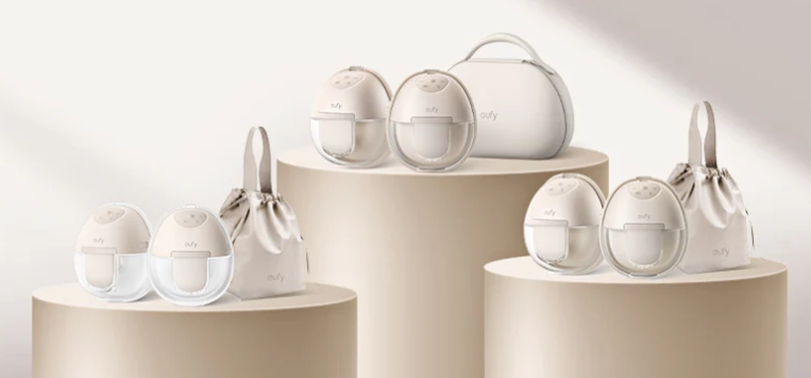Balancing breastfeeding with work and daily responsibilities can be overwhelming. Traditional pumps often limit mobility, but wearable pumps offer wireless, hands-free operation. These compact devices allow discreet pumping at work, during commutes, or while caring for children, empowering parents to maintain routines without sacrificing milk supply. This guide explores why wearable pumps are gaining popularity, how they outperform traditional models, and the key features to consider when choosing the best wearable breast pump. From battery life to suction strength, we’ll break down what makes these devices indispensable for today’s moms.

Reasons for Moms to Love Wearable Breast Pumps
Hands-Free Convenience for Busy Lifestyles
The primary appeal of wearable pumps is their tubeless, hands-free design. Unlike traditional pumps that require sitting upright and holding flanges, wearables fit inside a bra, leaving hands free for tasks like typing, cooking, or holding a baby. This mobility is critical for parents juggling multiple responsibilities. For example, a mom working from home can pump during a video call without drawing attention, while a parent caring for toddlers can multitask without pausing to sit and pump. Studies show that wearable pumps increase daily pumping frequency by 35%, as users can integrate sessions into their routines effortlessly. The compact size of wearables also makes them ideal for travel, fitting easily into bags without the need for separate power adapters or tubing.
Discreet Pumping in Public or at Work
Privacy concerns often deter parents from pumping in shared spaces. Wearable pumps solve this with quiet motors and discreet aesthetics. Most models operate at under 50 dB—quieter than a whisper—making them suitable for offices, public restrooms, or quiet environments. Their slim profile, often resembling a sports bra or small pouch, ensures they go unnoticed under clothing. This discretion reduces anxiety about pumping in public, encouraging consistency in milk supply. Traditional pumps, by contrast, are noisy and visually obvious, limiting their use to private rooms. Wearables also eliminate the need for frequent trips to dedicated pumping stations, saving time and reducing disruptions to workflows.
How Do Wearable Pumps Compare to Traditional Models?
Portability vs. Power: Finding the Right Balance
Traditional pumps are powerful but bulky, requiring a stable surface and access to electricity. This makes them impractical for on-the-go use. Wearable pumps prioritize portability, using rechargeable batteries and compact motors to fit into daily life. Early wearables struggled to match the output of hospital-grade pumps, but newer models now offer up to 300 mmHg suction, rivaling traditional devices. The key is balancing mobility with performance: look for pumps with adjustable suction levels to customize intensity based on comfort and milk flow.
Comfort: Less Bulk, Fewer Leaks
Traditional pumps often cause discomfort due to their rigid flanges and heavy motors, which press against the breast during use. Wearable pumps use soft, flexible silicone and ergonomic designs to distribute pressure evenly, reducing soreness. Their leakproof engineering—featuring double seals and reinforced compartments—prevents spills, even during movement. Traditional pumps, with their tubing and external containers, are prone to leaks if knocked over or mishandled. Wearables also minimize skin irritation by avoiding prolonged contact with hard plastic components. For parents with sensitive skin or those prone to clogged ducts, the gentle, consistent suction of wearables can improve overall comfort and reduce pumping-related pain.
What Features Should You Prioritize in a Wearable Pump?
Battery Life and Charging Options
Long battery life is critical for parents who pump frequently or travel often. Look for pumps with at least 4–6 hours of runtime per charge, equivalent to 3–4 sessions. Some models offer 40-hour battery cases (8 sessions) with wireless charging, eliminating the need for cords. Fast-charging capabilities are also valuable, reducing downtime between uses. Avoid pumps that require proprietary charging docks, as these can be inconvenient if lost or forgotten.
Suction Strength and Customization
Effective milk extraction depends on adjustable suction. Prioritize pumps with multiple intensity levels (5–10 settings) to accommodate different comfort thresholds and milk flow rates. Some models include rhythm modes that mimic a baby’s natural sucking pattern, improving let-down efficiency. Hospital-grade suction (250–300 mmHg) is ideal for emptying breasts fully, but ensure the pump allows gentle settings for sensitive nipples.

Ease of Cleaning and Maintenance
When it comes to breast pumps, hygiene is an absolute non-negotiable factor that directly impacts the baby’s health. Choose models with few detachable parts (e.g., flange, diaphragm, bottle) to simplify cleaning. Look for dishwasher-safe components or UV sterilization compatibility. Avoid pumps with narrow crevices or complex assemblies, as these harbor bacteria. Open-system pumps, which allow milk to flow directly into any container, are easier to clean than closed systems with proprietary bags.
Conclusion
Wearable breast pumps redefine convenience for modern parents, offering hands-free mobility, discreet operation, and customizable performance. For those seeking a premium solution, the eufy Wearable Breast Pumps stand out with their revolutionary technology. They provide an industry-leading wireless charging case, ensuring uninterrupted pumping sessions anywhere. The eufy Baby app feature lets you tailor suction rhythm and speed for a truly personalized experience. Ultra-quiet and leakproof, the eufy Wearable Breast Pumps combines comfort with reliability. For parents prioritizing innovation and ease, the eufy Wearable Breast Pumps isn’t just a pump-it’s a partner in your breastfeeding journey.
